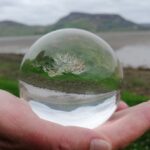Some people have suggested that, in the future, our age might be known as the Plastics Age. The Stone, Bronze and Iron Ages are named for the materials that humans began to work and shape and that in turn shaped the cultures and societies of the time. It’s undoubtedly the case that our own time has been dramatically changed by our invention and use of synthetic plastics.
But perhaps what is most distinctive about our time is waste.
Waste is the counterpoint of consumption. It is also something that has changed beyond recognition from the early 20th century onwards.
Future Archaeologies of Waste uses community-engaged, participatory speculative fiction to explore the ways future generations might interpret the present based on the waste we leave in the landscape. It is part of the Waste Stories project, led by Anna Wilson of the University of Glasgow.
At present we are developing two different themes: Marine Litter, and Abandoned Technologies and Infrastructures. These are presented through a developing of stories and virtual exhibits and that can be accessed following the links above.

Future Archaeologies of Marine Litter started with an original Waste Story which imagined the future archaeological study of the Nurdelic Age. It as been developed in collaboration with the Solway Firth Partnership and the Scottish Islands Federation Marine Litter Working Group. It is a sister project to the Solway Hoard, created in partnership with Museums of the FutureNow, an exhibition inspired by the Galloway Hoard.

Future Archaeologies of Abandoned Technologies and Infrastructures started with an original Waste Story that imagined a future archaeology of tyres.
For more information or to get directly involved, email info[at]futurearchaeologies.org.uk or contact Anna on Twitter via @waste_stories.
We are (very) grateful for funding provided by the Leverhulme Trust and the UKRI Natural Environment Research Council through the University of Glasgow’s 2023 NERC Interdisciplinarity Fund.